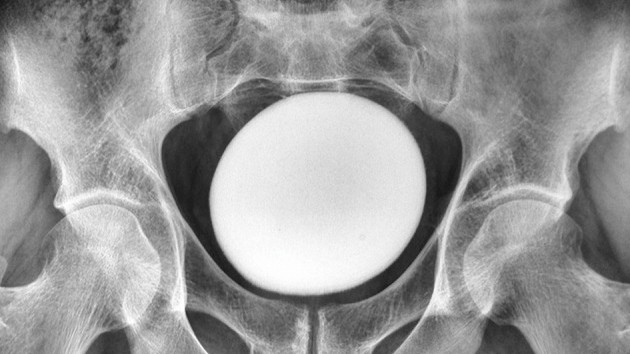Sulfur from dino-killing asteroid caused way more global cooling than thought
Massive amounts of airborne sulfur had disastrous effects.
When the dinosaur-destroying asteroid collided with Earth 66 million years ago, massive amounts of sulfur — volumes more than were previously thought — were thrown high above land into the stratosphere, a new study finds.
Once airborne, this vast cloud of sulfur-bearing gases blocked the sun and cooled Earth for decades to centuries, then fell down as lethal acid rain on Earth, changing the chemistry of the oceans for tens of thousands of years, which is longer than previously thought, the study found.
The findings show that "we've underestimated the amount of this sulfur that this asteroid impact created," study co-researcher James Witts, a lecturer in the School of Earth Sciences at the University of Bristol in the U.K., told Live Science. As a result, "the climate change that was associated with it was much greater perhaps than we thought previously."
The fact that sulfur continued pouring down on Earth's surface for so long may help explain why it took so long for life, especially marine life, to recover, as some of the sulfur that fell onto the land would have then washed away into the oceans, Witts said.
Related: What happened when the dinosaur-killing asteroid slammed into Earth?
Accidental finding
The researchers' finding was completely serendipitous. "It was not something that was planned at all," Witts said. The team had originally planned to study the geochemistry of ancient shells near the Brazos River in Falls County, Texas — a unique place that was underwater during the end-Cretaceous extinction, when the nonavian dinosaurs died out. It's also not too far from the Chicxulub crater in Mexico's Yucatan Peninsula, where the 6-mile-wide (10 kilometers) asteroid struck.
The researchers took a few sediment samples at the site, which they hadn't planned on doing. These samples were brought to the University of St Andrews in Scotland, where study co-researcher Aubrey Zerkle, a geochemist and geobiologist, analyzed the different sulfur isotopes, or variations of sulfur that have a different number of neutrons in their nuclei.
Get the world’s most fascinating discoveries delivered straight to your inbox.
The researchers found "a very unusual signal" — the sulfur isotopes had unexpected tiny changes to their masses, Witts said. Such mass changes occur when sulfur enters the atmosphere and interacts with ultraviolet (UV) light. "That can really only happen in two scenarios: either in an atmosphere that doesn't have any oxygen in it or when you have so much sulfur, it's gone really high up into an oxygenated atmosphere," Witts said.
Earth is about 4.5 billion years old, and it has been enveloped by an oxygenated atmosphere since about 2.3 billion years ago. "We're the first people to see this sort of thing in much more recent times," at least in sediments that aren't on the Earth's poles, Witts said. (That's because volcanic eruptions release sulfur high into the atmosphere, which can mix with snow and end up in high concentrations in ice cores at the poles, where there is no other sulfur or sulfate to dilute the signal, Witts said.)
"You don't see [this signal] in marine rocks," he said. "The sea has its own isotopic signature which totally dilutes the tiny amount of sulfur from these volcanoes." The fact that this signal is present in marine rock from the Cretaceous shows that, "there must have been a heck of a lot of sulfur in the atmosphere after this impact event," Witts said. "And that, of course, has a huge implication for climate change related to the impact because sulfur aerosols, we know from modern volcanic eruptions, cause cooling."
A lot of the sulfur came from the sulfur-rich limestone at the Yucatan Peninsula. "If the asteroid had hit somewhere else, perhaps there wouldn't have been as much sulfur released into the atmosphere and the climate change that followed might not have been as severe," Witts said. "And therefore the extinction event might not have been so bad."
Previous estimates of the sulfur aerosols entering Earth's atmosphere after the asteroid impact range from about 30 to 500 gigatons; according to climate models, this sulfur would have turned into sulfate aerosols, which would have caused 3.6 to 14.4 degrees Fahrenheit (2 to 8 degrees Celsius) cooling of the Earth's surface for a few decades after the impact. But the new finding suggests that because the sulfur amount was higher, the climate change could have been even more severe.
The study was published online Monday (March 21) in the journal Proceedings of the National Academy of Sciences.
Originally published on Live Science.

Laura is the managing editor at Live Science. She also runs the archaeology section and the Life's Little Mysteries series. Her work has appeared in The New York Times, Scholastic, Popular Science and Spectrum, a site on autism research. She has won multiple awards from the Society of Professional Journalists and the Washington Newspaper Publishers Association for her reporting at a weekly newspaper near Seattle. Laura holds a bachelor's degree in English literature and psychology from Washington University in St. Louis and a master's degree in science writing from NYU.





